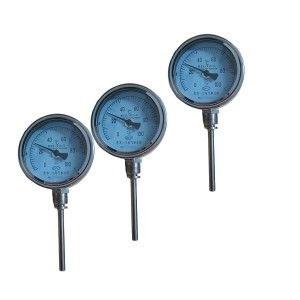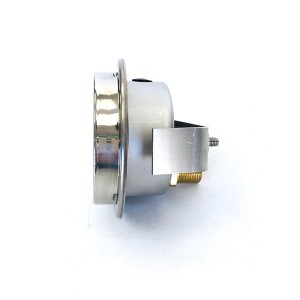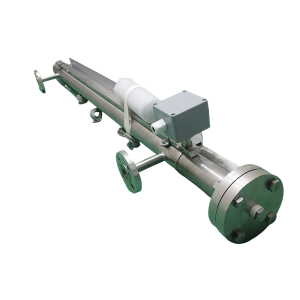Those involved in power plant transformer operations and maintenance know that pointer-type oil level indicators are critical components for monitoring oil levels—especially the YZF2-250(TH). Their sealing performance is directly related to the transformer’s stable operation. Over long-term use, leaks in the case seal can easily allow rainwater and dust to penetrate, while damage to the shaft seal can lead to transformer oil leakage. These are key issues that require careful attention during operation and maintenance. Today, we’ll discuss how to ensure the sealing reliability of the YZF2-250(TH) and provide practical operational advice.
I. Let’s clarify: What problems can seal failure cause?
Oil level indicator seal failure is not uncommon in transformer operation, but the consequences can be significant. Let’s first discuss the case seal: If the seal fails, rainwater and dust can penetrate inside, causing the needle to become stuck and inaccurate at best. I’ve seen power plants where water intruded into the case during the rainy season, causing the needle to freeze. Maintenance personnel failed to detect the drop in the oil level in time, nearly leading to oil starvation and overheating of the transformer. In more serious cases, dust and moisture can short-circuit the internal circuitry, directly damaging the indicator.

Next, consider the shaft seal: If it leaks, transformer oil will slowly seep out, wasting oil and polluting the surrounding environment while also causing the oil level inside the transformer to gradually decrease. More critically, an abnormally low oil level can affect the transformer’s insulation performance. Over time, this can cause coil overheating, insulation degradation, and even, in severe cases, explosion. These risks cannot be ignored.
Thus, ensuring the sealing reliability of the oil level indicator YZF2-250(TH) is no small matter; it’s fundamental to the safe operation of the transformer and must be kept in mind during maintenance.
II. Case Seal: How to Keep Out External “Dirty Things”?
The case seal is the primary barrier against rain and dust intrusion. The YZF2-250(TH) case seal relies primarily on the sealing ring and assembly process. Properly performing these two tasks ensures a highly reliable seal.
First, choose the right sealing ring material. Don’t just use ordinary rubber rings; opt for ones that are oil-resistant, temperature-resistant, and age-resistant—for example, fluororubber or silicone rubber are suitable. When the transformer is operating, the internal temperature is not low, and the ambient humidity can be high. These two materials are less likely to harden or crack under these conditions, maintaining their elasticity over time and maintaining effective sealing.
Next, ensure installation according to specifications. When installing the case, first inspect the sealing ring for distortion or scratches. Ensure it is intact before inserting it, ensuring it is aligned and not tilted. Avoid using brute force when tightening the screws; it’s best to use a torque wrench to control the force. Excessive pressure can permanently deform the sealing ring and lead to leaks, while insufficient pressure can result in a loose seal. Additionally, a layer of specialized sealant can be applied to the joint between the case and the transformer tank to further enhance the seal.

Finally, perform regular inspections. During routine inspections, pay close attention to the case seals: check for oil stains (possibly from internal oil seepage), water stains (from leaks during rainy weather), or dust accumulation (caused by a leaky seal). If you notice any of these, don’t delay; disassemble and inspect the seals immediately. Replace any necessary seals and re-seal any necessary seals. Don’t let minor issues become major problems.
III. Rotating Shaft Seal: How to Prevent Transformer Oil Leaks?
The rotating shaft is the moving part of the oil level indicator and is crucial for preventing leaks. The YZF2-250(TH) level indicator rotating shaft seal uses a double-layer design and includes dedicated seals. With careful selection and installation, the risk of leaks is significantly reduced.
First, let’s discuss the advantages of a double-layer seal design: the first layer is the main seal, which comes into direct contact with the transformer oil and primarily serves as a barrier. The second layer is the auxiliary seal, acting as a “backup line of defense”—even if the main seal wears out from long-term friction, the auxiliary seal can fill the gap and prevent direct oil leakage. This design is significantly more reliable than a single-layer seal and is particularly suitable for transformers operating over a long period of time.
Next, consider seal selection. Shaft seals must be oil-resistant, high-temperature-resistant, and wear-resistant—PTFE or special synthetic rubber is recommended. These materials resist aging and hardening during long-term friction with the shaft, maintaining excellent sealing performance and reducing the likelihood of leakage.
Pay attention to detail during installation: Avoid handling seals with your bare hands, as hand grease may adhere to the seal and affect sealing effectiveness. Wear clean gloves or use specialized tools when handling. Additionally, the clearance between the shaft and seal must meet design requirements. Too much clearance can easily allow oil to leak through, while too little can cause excessive friction during shaft rotation, accelerating seal wear. Before installation, use a feeler gauge to measure the clearance to ensure compliance.
IV. Preventive Maintenance: How to Extend Seal Life?
Seals are consumables. Even if carefully selected and properly installed, they will degrade over time, making preventive maintenance crucial. For the oil level indicator YZF2-250(TH), a maintenance plan can be developed based on the following points:

First, regular cleaning. Regularly wipe the surface of the oil level indicator, especially around the case seams and the shaft. Avoid using highly corrosive cleaners (such as denatured alcohol or strong alkaline detergents), as these can damage the seals. Wipe with a soft cloth dampened with a neutral detergent (such as diluted dish soap). Allow to dry after wiping to prevent residual liquid from seeping into the seals.
Second, make sure to avoid missing items during routine inspections. Whenever you inspect the transformer on-site, pay special attention to the case and shaft seals: for signs of oil leakage, dust accumulation, and smooth movement of the indicator. (If it’s stuck, it could be due to foreign matter in the seals.) Address any anomalies promptly. For example, if there’s a small amount of oil leakage from the seals, tighten the screws. If leakage persists, disassemble and replace the seals.
Third, replace seals regularly. Even if they appear intact, seals degrade over time. It’s generally recommended to replace seals every 3-5 years. If the transformer operates in a harsh environment (such as one with high dust, humidity, or temperature fluctuations), this can be reduced to 2-3 years. When replacing, choose seals that match the original manufacturer’s specifications. Avoid mixing different models to avoid mismatches and seal failure.
V. Choose the Right Product: Control Seal Reliability from the Source
In addition to maintenance, the quality of the product itself has a greater impact on seal reliability. High-quality oil level indicators prioritize sealing performance from design to manufacturing.
When choosing, prioritize brands and products with professional certifications, such as those certified to national power industry standards or compliant with ISO quality management systems. These products utilize more robust materials, such as seals made of highly weather-resistant materials, and their seal structures undergo extensive testing and optimization. For example, the YZF2-250(TH) was designed with seals optimized specifically for power station environments: a double-layer shaft seal + oil- and temperature-resistant case seals, along with precise assembly processes. Over time, the probability of seal failure is significantly lower than with standard products.
Some may think that “cheaper is worse than more expensive,” but in the long run, high-quality products actually save money. For example, ordinary oil-level indicators may develop sealing problems after one or two years. The combined costs of replacement, repair, and downtime are much higher than if a specialized product like the YZF2-250(TH) were selected from the outset.
The YZF2-250(TH) may appear to be a “small component,” but its role in transformer safety is significant. Don’t ignore it during maintenance just because it’s “small.” Regularly monitoring the seals and performing installation and maintenance according to specifications will not only extend its lifespan but also reduce the risk of transformer failure, ultimately saving significant maintenance costs. The key point is that sealing isn’t a one-size-fits-all solution; it requires ongoing monitoring and timely adjustments to ensure stable transformer operation.
If anyone has encountered sealing issues with the YZF2-250(TH) in actual operation or maintenance, or has other maintenance tips, please share your experience. After all, sharing practical experience can help others avoid mistakes.
When looking for high-quality, reliable oil level indicators, YOYIK is undoubtedly a choice worth considering. The company specializes in providing a variety of power equipment including steam turbine accessories, and has won wide acclaim for its high-quality products and services. For more information or inquiries, please contact the customer service below:
E-mail: sales@yoyik.com
Tel: +86-838-2226655
Whatsapp: +86-13618105229
Yoyik offers various types of power plants spare parts for steam turbines, generators, boilers as below:
sensor SDJ-SC-2H
pressure transmitter HM100-250-R-M20×1.5-BF
Vibration sensor CON021
Electronic ruler KLC-100
Electric actuator 2SA77HN-D1 6UU+FT+G55-HY-MN
Eddy Current Sensor PR6424/002-001
Thermal trip air switch PL9-C10/3
displacement measurement by lvdt DET.2A.4000A
displacement measurement instrument ZDET-300A
electropneumatic converter EPC-1110
Actuator F10F12-27.RC260-SR060QHT
intelligence Hand Operator NPDF-Q10FD0
intelligence Hand Operator NPDF-Q20D0
Eddy Current Sensor PR6423/004-110
Eddy Current Signal Converter CON031/915-060
Anti-blocking wind pressure sampler ZDPFY
Bolt Heater DJ40
Bimetal Thermometer WSS-561
Eddy Current Sensor PR6422/003-001
Speed measuring instrument ZXZ-02
Eddy Current Sensor PR6422/001-001
Eddy Current Sensor PR6422/102-121
Signal Converter System Gap Measuring Transmitter GJCF-6A
Current-Voltage Converter LJB1 2000A/10V 0.5
proximity sensor price TM0110-A05-B05-C30-D10
RESISTANCE TEMPERATURE DETECTOR WZPM2-12-50-G½-S
HP DIFFERENTIAL EXPANSION CWY-DO-20Y-45K
Eddy Current Sensor PR6422/002-140
safety pressure switch CE25
Eddy Current Sensor PR6424/102-001
Eccentricity sensor A1-B1-C042-D000-E010-F0-G000-H10
linear position DET800A
Post time: Sep-15-2025













